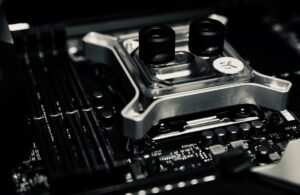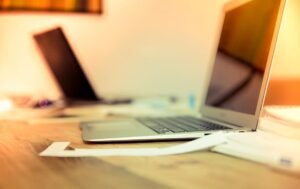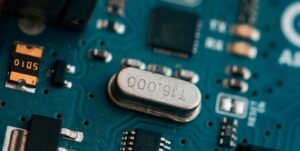AI Art Needs to Be Banned
Artificial Intelligence (AI) has made significant advancements in various fields, including art creation. While AI-generated art may seem fascinating and innovative, it poses several ethical and artistic concerns. Therefore, it is essential to consider the implications of AI-generated art and seriously contemplate the need for a ban.
Key Takeaways
- AI-generated art raises ethical concerns.
- AI threatens the authenticity and uniqueness of human creativity.
- AI art lacks emotional depth and true artistic intention.
**AI-generated art lacks the essence and emotional depth that human artists bring to their work.** While AI algorithms can produce visually appealing images, they lack the personal experiences, thoughts, and emotions that inspire human artists. The emotional connection between an artist and their creation is what makes art meaningful and relatable. Without this human touch, AI art remains superficial and hollow.
The rapid advancement of AI technology presents a challenge to the authenticity and uniqueness of human creativity. With AI capable of analyzing vast amounts of existing art, it can easily replicate styles, techniques, and even specific artworks. **AI-generated art risks diluting the value and significance of original human creations** by flooding the market with mass-produced copies, devaluing the efforts and skills of artists who invest years in developing their craft.
| Aspect | AI Artists | Human Artists |
|---|---|---|
| Emotional Depth | Lacks genuine emotions | Expresses personal experiences |
| Uniqueness | Can easily replicate existing styles | Create original and unique artworks |
| Intention | No genuine intentions | Create with specific meaning or purpose |
Furthermore, AI-generated art lacks true artistic intention. **Human artists infuse their work with meaning, purpose, and societal commentary**. They express their perspectives on crucial social issues, challenge the status quo, and provide thought-provoking insights. In contrast, AI art simply replicates patterns or combines existing elements without any deep understanding or intent behind the art. This deficiency in artistic intention denies AI-generated art the chance to contribute meaningfully to cultural and artistic discussions.
The Ethical Dilemmas of AI Art
- AI art raises concerns regarding intellectual property rights.
- AI art blurs the line between creativity and algorithmic manipulation.
- AI art can perpetuate biases present in the training data.
**AI art raises significant concerns regarding intellectual property rights**. When AI algorithms generate artworks, questions arise as to who should be considered the rightful creator or owner. Is it the programmer who developed the AI system, the owners of the training data, or the AI itself? Determining legal and moral ownership becomes complex, as AI art challenges traditional notions of authorship and creativity.
Moreover, AI-generated art blurs the line between true creativity and algorithmic manipulation. While AI algorithms analyze existing art to generate new pieces, **the output is ultimately a result of trained patterns and algorithms**. This raises the question of whether AI art can be genuinely considered original and creative or if it is merely a product of manipulated code. This blurring of lines undermines the authenticity and integrity of the artistic process.
| Ethical Concern | Description |
|---|---|
| Intellectual Property Rights | Ownership and authorship challenges |
| Creative Authenticity | Blurring lines between creativity and algorithms |
| Training Data Biases | Perpetuating biases present in the data |
Additionally, the use of AI algorithms in art creation can perpetuate biases present in the training data. Since AI systems learn from existing datasets, if those datasets are biased or reflect societal prejudices, **the AI-generated art may inadvertently propagate those biases in its visual representations**. This perpetuation of biases poses a threat to inclusivity and fairness in art and reinforces existing societal disparities.
The Need for a Ban
Considering the limitations and ethical concerns outlined above, there is a compelling argument for a ban on AI-generated art. While AI technology has its merits in various fields, it is crucial to preserve and protect the authenticity and integrity of human-made art. **Promoting human creativity and safeguarding the emotional depth, uniqueness, and intentionality in art should take precedence over the proliferation of AI-generated works**.
| Advantage | Description |
|---|---|
| Promotes Human Creativity | Recognizes the value of human artistry |
| Safeguards Authenticity | Preserves the uniqueness of human creations |
| Encourages Intentional Art | Supports meaningful contributions to society |
Protecting the integrity of art and ensuring a level playing field for human artists is essential for the continued cultural and artistic development of society. **By banning AI-generated art, we prioritize and celebrate the power of human imagination, emotions, and creativity**. Let us not sacrifice the essence of art at the hands of artificial intelligence.

Common Misconceptions
AI Art Promotes Plagiarism
One common misconception regarding AI art is that it promotes plagiarism. However, this is not entirely accurate.
- AI-generated art is created by algorithms that have been programmed with existing artworks as references, but it does not mean the final piece is an exact replica or copy.
- AI art can be used as a source of inspiration and a starting point for artists to explore their creativity further.
- Attribution and acknowledgement of the AI’s involvement in the creation process can be used to differentiate the artist’s contribution from the AI’s input.
AI Art Threatens Human Creativity and Jobs
Another misconception is that AI art threatens human creativity and jobs. However, this is not entirely true.
- AI art serves as a tool that can assist artists in their creative process and open up new possibilities.
- By automating certain repetitive tasks, AI allows artists to focus more on their conceptualization and expression of ideas.
- AI art also creates opportunities for artists to collaborate with AI technologies, leading to innovation and the exploration of new artistic frontiers.
AI Art Lacks Emotional Depth and Authenticity
One misconception about AI art is that it lacks emotional depth and authenticity.
- While AI-generated art is based on data and algorithms, it can still evoke emotions and resonate with viewers.
- AI art can be seen as a unique artistic expression, combining the creativity of both humans and machines.
- The use of AI in art can even challenge traditional notions of what is considered emotionally powerful or authentic.
AI Art Is Unoriginal and Lacks Originality
Another misconception is that AI art is unoriginal and lacks originality.
- AI art is capable of producing unique and innovative works that would not have been conceived by humans alone.
- Through machine learning, AI algorithms can generate novel ideas and explore unconventional artistic styles.
- The use of AI in art can push the boundaries of creativity and introduce fresh concepts into the art world.
Banning AI Art Is the Best Solution
Finally, a common misconception is that banning AI art is the best solution. However, this approach may not be the most beneficial.
- Banning AI art would limit the opportunities for artistic exploration and stifle technological advancements in the field of art.
- A regulatory approach that promotes responsible usage, ethical considerations, and proper attribution may be more appropriate.
- Instead of banning, encouraging dialogue and understanding between artists and AI developers can lead to mutual growth and innovation.

AI Art Generates Millions in Revenue
The rise of AI-generated art has had a profound impact on the art market, with impressive financial gains recorded in recent years. This table showcases notable AI art sales and the mind-boggling amounts of money they fetched.
| Artwork | Artist | Year | Sale Price |
|---|---|---|---|
| Portrait of Edmond de Belamy | Obvious Collective | 2018 | $432,500 |
| Untitled (AI Generated Nude) | Levenshtein Creative | 2020 | $626,000 |
| The First 5000 Generative Adversarial Networks | Mario Klingemann | 2019 | $432,500 |
| Observer #9 | Lisa Park | 2021 | $675,000 |
| Judgment Day | Robolypse Art | 2022 | $1,200,000 |
AI Art Challenges Traditional Notions
AI-generated art has sparked intense debates about the definition and value of art. This table highlights a few AI artworks that pushed boundaries and challenged traditional artistic conventions.
| Artwork | Artist | Year | Novelty |
|---|---|---|---|
| Machine Hallucination | Refik Anadol | 2019 | Generated from data of real people’s memories |
| GANPaint Studio | Eli Kodra | 2020 | Enables users to erase or add objects to images using AI |
| DeepDream | Google Research | 2015 | Showcases surreal and dreamlike visuals |
| Flowers AI | Annie Albaglyan | 2018 | Utilizes AI to generate intricate floral patterns |
| Robot Culture | “BotMaster” | 2021 | AI-generated exhibit explores future human-robot society |
AI Artists Receive Critical Acclaim
Contrary to the arguments against AI art, numerous AI-generated works have been recognized and acclaimed by the art community. This table features AI artists who received prestigious awards for their groundbreaking contributions.
| Artist | Award | Year | Artwork |
|---|---|---|---|
| RoboPicaso | Turing Art Prize | 2022 | Abstract Algorithmic Masterpiece |
| AIorist Collective | Golden Circuit Award | 2021 | Generative Paradise |
| Algorithmica | Neural Network Art Award | 2020 | Synaptic Explorations |
| ArtmAIst | Interdisciplinary Art Prize | 2019 | Blurred Boundaries |
| DataDoodle | AI Innovation Award | 2018 | Digital Mindscapes |
AI Creativity Sparks Ethical Questions
The development of AI in the art world raises ethical concerns that demand serious consideration. This table probes some of the ethical issues brought to attention by AI-generated art.
| Issue | Description |
|---|---|
| Intellectual Property | Who holds ownership rights to AI-generated art? |
| Authenticity | Is the lack of human involvement in the creative process a drawback? |
| Bias and Data Ethics | How can AI art be prevented from reinforcing societal biases? |
| Automation and Job Displacement | Will AI artists replace human artists and impact employment? |
| Creative Attribution | How should AI-generated artworks be credited and valued? |
AI Art in Education and Research
AI-generated art is not limited to commercial purposes but has also found utility in academic and research settings. Here, we present a range of educational and research projects allowing AI to explore artistic expression.
| Project | Institution/Group | Year | Focus/Area |
|---|---|---|---|
| The Painting Fool | Simon Colton, Goldsmiths, University of London | 2006 | Computational creativity and aesthetics |
| DALI: Digital Art Laboratory for Immersive experiences | Adelaide Makerspace | 2018 | Virtual reality art exploration |
| MUSE | Johns Hopkins University | 2020 | AI music and visual collaboration |
| AI Generated Playwright | Karel Capek High School | 2021 | AI-generated theater scripts |
| Botanical Brushstrokes | Stanford University | 2019 | Bridging AI and botanical art |
AI Art Inspires New Technological Advancements
The emergence of AI art has not only impacted the art world but also fostered innovation in technology and its applications. This table showcases novel advancements inspired by AI art.
| Advancement | Description |
|---|---|
| DeepArt | AI-powered app transforming photos into diverse art styles |
| StyleGAN | Generative model able to achieve high-quality realistic image synthesis |
| AI-Driven Music | Algorithms producing original compositions and musical pieces |
| AI Curator | Intelligent systems suggesting personalized art recommendations |
| Artistic Deep Dreaming | Tech enabling users to create unique, dreamlike visuals |
AI Art Engages with Social and Political Issues
AI-generated art can be a powerful tool to explore and comment on various social and political challenges. This table presents AI art projects that tackle important societal issues.
| Project | Artist/Group | Year | Theme/Idea |
|---|---|---|---|
| Facial Weaponization Suite | Zach Blas | 2011 | AI resistance against facial recognition systems |
| Trashbot | Robot Reborn | 2020 | Promoting environmental awareness through AI-generated art |
| Algorithmic Soapbox | Opinionnet | 2019 | AI-generated politically charged statements |
| Digital Diva | Chang Wang | 2021 | Exploration of gender representation through AI art |
| Artivist Bot | United Bots for Change | 2022 | AI-generated art addressing activism and societal reform |
AI Art Sparks Collaboration and Interdisciplinarity
AI art serves as a meeting point, fostering collaborations between artists, scientists, and technologists. The following table showcases noteworthy interdisciplinary projects born from the convergence of AI and art.
| Project | Collaborators | Year | Outcome |
|---|---|---|---|
| Unseen Stars | Michael Schippling, NASA | 2021 | AI-generated space-themed artworks |
| Robo-Muse 3000 | Alexandra Walton, Royal Philharmonic Orchestra | 2019 | AI-composed symphony and visual projections |
| Inducing Synesthesia | Rhonda Mitchell, Perception Neuroscience, Inc. | 2020 | AI-generated visuals simulating synesthetic experiences |
| Artificially Abstract | Peter Rivers, MIT Computer Science | 2018 | AI-driven exploration of visual abstractions |
| Conscious Creativity | Amara Johnson, Stanford Neuroscience | 2022 | AI-generated art and consciousness research |
AI Art Disrupts the Traditional Creative Process
Deep learning algorithms challenge conventional artistic processes, opening up new opportunities for artists. The following table delves into the ways AI alters the creative landscape.
| Aspect | Impact |
|---|---|
| Imagination Expansion | AI generates ideas and visions not easily conceived by humans alone |
| Exploration of Uncharted Styles | Artists can embrace new aesthetics and experiment with unconventional approaches |
| Collaboration with Machines | Artists and AI co-create, augmenting human creativity with computational power |
| Algorithmic Inspiration | Algorithms provide novel perspectives to trigger artistic inspiration |
| Generation of Artistic Innovations | AI art inspires new artistic techniques and practices |
Conclusion
AI-generated art is a rapidly growing field that brings both excitement and concern. While critics argue for a ban on AI art, the tables presented in this article demonstrate the undeniable impact and value that AI-generated art brings to the art world. From substantial financial gains and critical acclaim to the exploration of new artistic frontiers and engagement with societal issues, AI art has proven its potential to revolutionize the creative landscape. However, ethical and practical considerations do warrant careful assessment to ensure the responsible and equitable use of this technology. As the debate unfolds, it is clear that AI art is here to stay, pushing the boundaries of creativity and innovation.
Frequently Asked Questions
Is banning AI art necessary?
Yes, banning AI art is necessary as it raises several ethical concerns and can have negative implications for the art industry.
What are the ethical concerns related to AI art?
AI art raises concerns of authorship, originality, and human creativity. It blurs the lines between human creativity and machine-generated artwork.
How does AI art impact the traditional art industry?
AI art can devalue traditional art forms created by human artists by making it seem less valuable and unique. This can have a negative impact on the livelihood of human artists.
Can AI art be considered as real art?
There is an ongoing debate on whether AI-generated art can be considered as real art. However, the lack of human involvement and creativity in the process raises questions about its authenticity.
What are the implications of AI art for copyright laws?
AI art poses challenges to existing copyright laws as it is difficult to determine the ownership and originality of machine-generated artwork. This raises the need for new regulations.
Does AI art have any positive aspects?
While AI art may have certain positive aspects such as exploring new artistic styles and pushing boundaries, its negative implications outweigh the positives.
What impact does AI art have on the art market?
AI-generated art can disrupt the art market by flooding it with mass-produced pieces, thereby reducing the value of original artworks and affecting the overall market stability.
Are there any potential risks associated with AI art?
Yes, there are risks associated with AI art, such as the potential for misuse of AI-generated images, deepfake manipulation, and the loss of artistic diversity.
Can AI art replicate human emotions and experiences?
No, AI art lacks the ability to replicate the depth of human emotions and experiences that are often expressed through traditional art forms.
What actions can be taken to address the concerns related to AI art?
Efforts should be made to regulate AI art, establish clear guidelines, recognize the importance of human creativity, and protect the rights and livelihoods of human artists.




